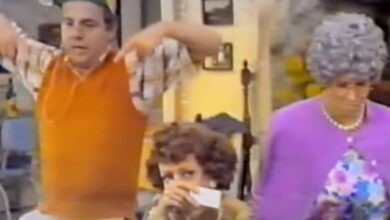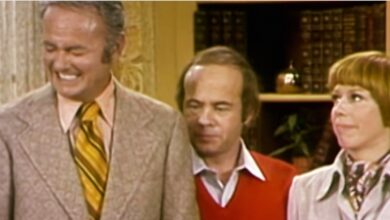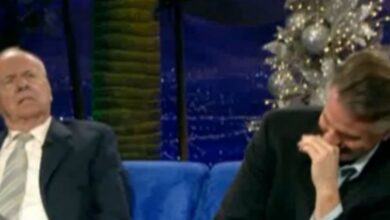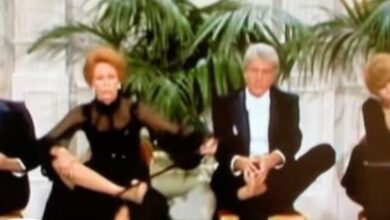Robin Gibb’s “Kathy’s Gone” Bridges Heartache and Synth-Pop in 1983
In 1983, Robin Gibb released Kathy’s Gone as part of his solo album How Old Are You?, marking a poignant departure from the Bee Gees’ disco-era dominance. The song’s melancholic tone and introspective lyrics revealed a more personal side of Gibb’s artistry, blending emotional vulnerability with the polished synth-pop production of the early ’80s. Though it wasn’t a major chart hit, the track carved out a place in the hearts of devoted fans and has since been regarded as one of his most emotionally resonant solo efforts.
Robin Gibb, born in 1949 on the Isle of Man, rose to fame as one-third of the Bee Gees alongside his brothers Barry and Maurice. Known for his haunting vibrato and emotionally charged vocal style, Robin’s voice gave many of the Bee Gees’ biggest ballads their signature sound. While the trio’s disco hits catapulted them to global fame, Robin often gravitated toward more somber and reflective musical themes, which flourished more freely in his solo work.
The origins of Kathy’s Gone remain somewhat mysterious. Robin never spoke at length about the real-life inspiration behind the song, but its lyrics paint a vivid picture of love lost and lingering sorrow. Some fans speculate the track draws from personal heartbreak or the emotional toll of life on the road. The ambiguity only adds to its poignancy, allowing listeners to connect with its aching sentiment in their own way.
The song was recorded at Middle Ear Studios in Miami, co-produced by Robin and his brother Maurice Gibb. Embracing the production styles of the era, the track features a stripped-down arrangement built around synthesizers, delicate piano chords, and subtle electronic textures. Robin’s tender vocal performance anchors the piece, each note delivered with aching precision that underscores the song’s sense of longing.
While the album’s lead single “Juliet” soared to the top of European charts, Kathy’s Gone was more of a hidden treasure, quietly admired by those who explored the album beyond its hits. Critics praised Robin’s ability to tap into genuine emotion, and over time, the song has been embraced as a deep cut that exemplifies his talents outside the Bee Gees spotlight.
The early ’80s marked a period of transition for pop music, with traditional instrumentation giving way to digital innovation. Kathy’s Gone reflected this shift while remaining grounded in classic ballad structure. Gibb’s use of electronic textures didn’t dilute the song’s emotional weight—it amplified it, demonstrating that modern production and heartfelt songwriting could coexist beautifully.
For Robin Gibb personally, the track symbolized a moment of artistic independence. Though forever linked to the Bee Gees legacy, he used this solo project to dive deeper into themes of introspection, vulnerability, and emotional complexity. Kathy’s Gone highlighted his strengths as a storyteller, unbound by genre expectations or commercial pressure.
Beyond his own discography, the song’s fusion of emotional songwriting with synth-driven production quietly influenced other artists exploring similar sonic territory. It showed that synthesizers weren’t just for dance floors—they could be vehicles for deeply personal expression. This sensibility would go on to shape much of the emotive pop that emerged in the late ‘80s and early ‘90s.
Unlike some Bee Gees classics that have been covered extensively, Kathy’s Gone remains largely untouched by other performers. Its intimacy and specificity make it a uniquely Robin Gibb creation, one that feels too personal to reinterpret. Yet for listeners, that untouched quality only strengthens its impact, preserving it as a rare and unfiltered glimpse into Gibb’s inner world.
At the time of the song’s release, Robin was balancing solo efforts with the Bee Gees’ shifting career path post-disco. The group had weathered both enormous popularity and industry backlash, and solo projects offered the brothers space to redefine themselves creatively. In that context, Kathy’s Gone can be seen as a reflective pause—an artist taking stock of love, loss, and identity.
Though it was never a chart-topping single, Kathy’s Gone has proven remarkably enduring. Its timeless emotion continues to resonate with fans old and new, especially those who seek out the quieter, more contemplative corners of Gibb’s body of work. The song endures not through radio play, but through word-of-mouth reverence and rediscovery.
The track’s subtle blend of traditional ballad elements with cutting-edge production helped lay groundwork for a new kind of pop storytelling. It embraced the tools of its time without losing sight of universal human emotion—a balance that would inspire future generations of singer-songwriters navigating a similarly digital world.
After Robin Gibb’s passing in 2012, a renewed appreciation for his solo work brought Kathy’s Gone back into the conversation. Fans revisiting his catalog were reminded of the emotional power he could summon in just a few verses. The song has since been featured in retrospectives and tributes, honored as a quiet yet unforgettable part of his legacy.
More than four decades later, Kathy’s Gone remains one of the most emotionally raw recordings in Robin Gibb’s catalog. It captures a universal truth—that grief and love often walk hand in hand. With nothing more than sparse instrumentation and a trembling voice, Gibb told a story that continues to move listeners across time.
In the larger landscape of pop music, this track stands as a testament to the power of vulnerability. It dared to be quiet in a loud era and proved that even amid changing trends and technology, what resonates most is honesty. Robin Gibb’s Kathy’s Gone is more than a song—it’s a lasting echo of a heart laid bare.





